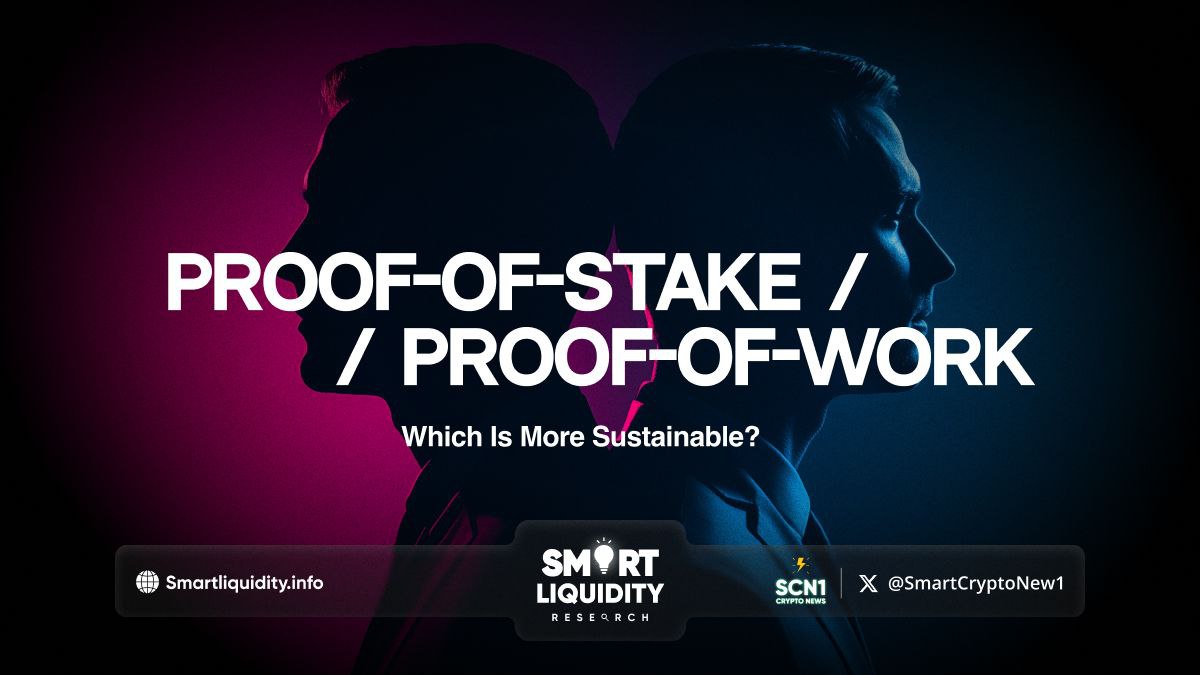Proof-of-Stake vs Proof-of-Work: Which Is More Sustainable?


Proof-of-Stake vs Proof-of-Work: Which Is More Sustainable? As blockchain technology continues to evolve, the debate surrounding the sustainability of different consensus mechanisms has gained significant attention. The two leading systems in question are Proof-of-Work (PoW) and Proof-of-Stake (PoS).
Each consensus model serves as the backbone of different blockchain networks, ensuring security, verification, and decentralization. However, their environmental impacts, energy consumption, and scalability differ drastically, raising the question—which is more sustainable.
Understanding Proof-of-Work (PoW)
Proof-of-work is the original consensus mechanism, first introduced with Bitcoin in 2009. It requires miners to solve complex cryptographic puzzles to validate transactions and add them to the blockchain. The first to solve the puzzle is rewarded with cryptocurrency, incentivizing continuous competition among miners.
However, this competition comes with a massive energy requirement. Specialized hardware, like ASICs (Application-Specific Integrated Circuits), uses enormous amounts of electricity, leading to concerns about the carbon footprint and long-term sustainability of PoW systems.
Pros:
- A proven and well-established system
- High level of security and decentralization
Cons:
- Slower transaction speeds and limited scalability
- Energy-intensive and environmentally unfriendly
The Rise of Proof-of-Stake (PoS)
In contrast, Proof-of-Stake takes a less energy-dependent approach. Instead of miners, PoS relies on validators who are chosen to create new blocks based on the number of tokens they “stake” as collateral. This method eliminates the need for high-powered mining equipment and significantly reduces energy consumption.
PoS gained popularity as a more sustainable and scalable alternative to PoW, with Ethereum’s recent transition from PoW to PoS (through the Ethereum 2.0 upgrade) being a landmark event in blockchain development. By using token ownership as the deciding factor for block validation, PoS creates a greener, more efficient network.
Pros:
- Higher accessibility, as users don’t need expensive hardware
- Faster transaction speeds and better scalability
- Much lower energy consumption compared to PoW
Cons:
- Newer, less proven system compared to PoW
- Potential for centralization, as wealthier participants hold more influence
Environmental Impact: A Key Factor
The environmental impact of blockchain networks has become a major point of discussion, especially as climate change awareness grows. Bitcoin’s PoW system alone consumes more electricity than some small countries, raising questions about its long-term viability.
PoS systems, like those used by Ethereum 2.0, Cardano, and Polkadot, consume a fraction of the energy. According to estimates, Ethereum’s switch to PoS has cut its energy consumption by over 99%, making it an attractive choice for those prioritizing sustainability.
Which Is More Sustainable?
If sustainability is the key concern, Proof-of-Stake is undoubtedly the more eco-friendly option. Its ability to scale without relying on power-hungry hardware makes it a clear winner from an environmental perspective. However, Proof-of-Work still holds the advantage when it comes to security and decentralization, which are critical for networks like Bitcoin.
Ultimately, the answer depends on the priorities of each network. As the blockchain space continues to grow, both PoW and PoS will likely co-exist, serving different purposes and catering to different communities.
In Summary
The sustainability debate between Proof-of-Work and Proof-of-Stake highlights the broader challenges facing blockchain technology in its quest for mass adoption. While PoW offers robust security, its energy demands are difficult to ignore. Meanwhile, PoS brings a greener, more scalable alternative but faces its own set of trade-offs, especially around potential centralization.
As the space evolves, the continued development of hybrid models, layer-2 scaling solutions, and improved consensus algorithms could eventually bridge the gap between sustainability and security, offering the best of both worlds.




